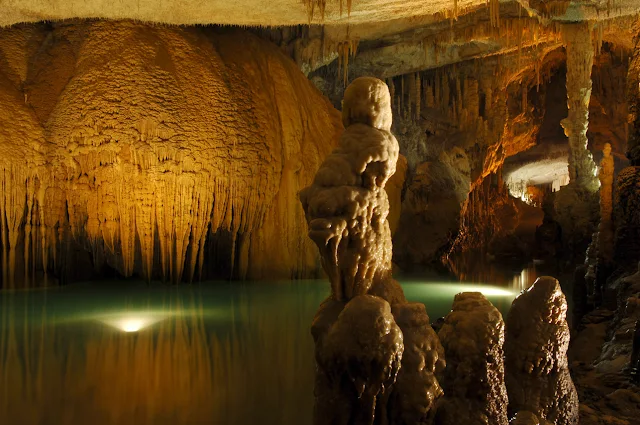Tourism in Lebanon is characterized by a variety of activities, including natural attractions.
Jeita Grotto Lebanon
Jeita Grotto is located 18 km to the north of the Lebanese city of Beirut, and its length is about 10,000 m. Thus, it is considered one of the longest caves in the Near East.
This cave was discovered during the fifties of the twentieth century AD, and it was opened to visitors in 1958, and then in 1969.
The cave includes natural formations called stalactites, which are considered the longest in the world with a length of up to 8.2 m.
The Jeita Grotto amazed everyone who saw it, and it competed with twenty-eight distinguished landmarks around the world for the New Seven Wonders of the Natural Award.
It is visited by about 280,000 people each year.
Cedar Forests in Lebanon
There are many cedar forests in Lebanon, including the following:
- Cedars Of God: It is eight kilometers from the town of Bcharre, and is considered one of the most beautiful reserves in Lebanon, and the home of the ancient cedar forest. Visitors enjoy many activities in it, such as paragliding, driving four-wheel drive vehicles in the summer, and practicing snowboarding in the winter.
- Tannourine Cedar Forest: The reserve includes many cedar trees, amounting to 80% of all other trees, and thus receives many visitors every year, as it provides the opportunity to have many enjoyable experiences, hiking on walking paths, and enjoying the mountain views surrounding the reserve.
- Hadath Al-Jabba Cedar Forest: It is considered one of the most beautiful and largest forests in Lebanon, with about three hundred thousand trees of the Lebanese cedar type, among which are perennial trees that have reached a thousand years, and there are many wild animals and birds in the forest, as well as rare types of plants.
- Al-Shouf Cedar Reserve: The Chouf Cedar Nature Reserve extends from Dahr al-Baydar in the north to Mount Niha in the south, and is thus considered the largest natural reserve in the Lebanese territories, and is characterized by the presence of oak trees on the northeastern slopes, oak and juniper forests on the southeastern slopes, in addition to cedar forests the three; Maaser Al-Shouf Forest, Barouk Forest, and Ain Zhalta Forest. These forests occupy 25% of the total area of the cedar forests in the country. In addition, the Chouf Cedar Nature Reserve includes trees estimated to be about 2,000 years old, and different types of animals, such as the wolf and the Lebanese Forest Cat, along with many trails, walking trails, restaurants, and resorts.


